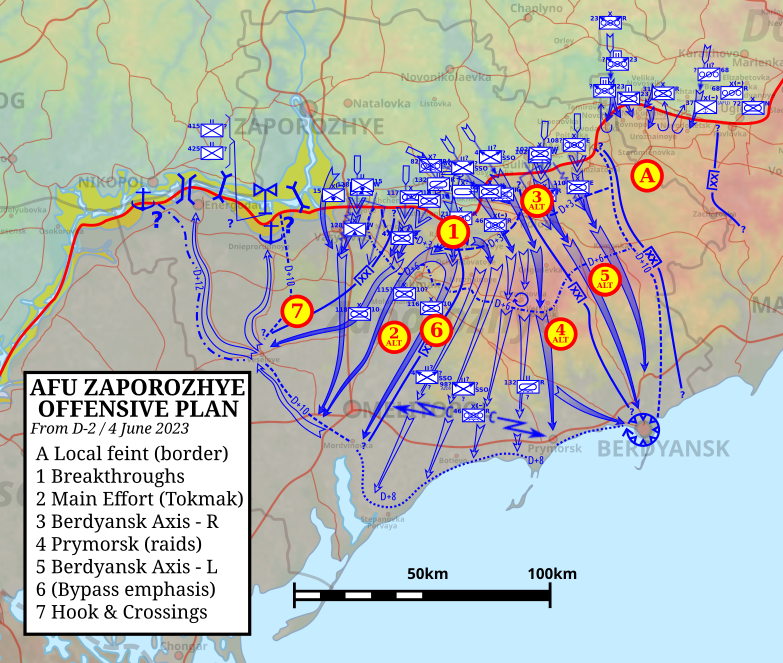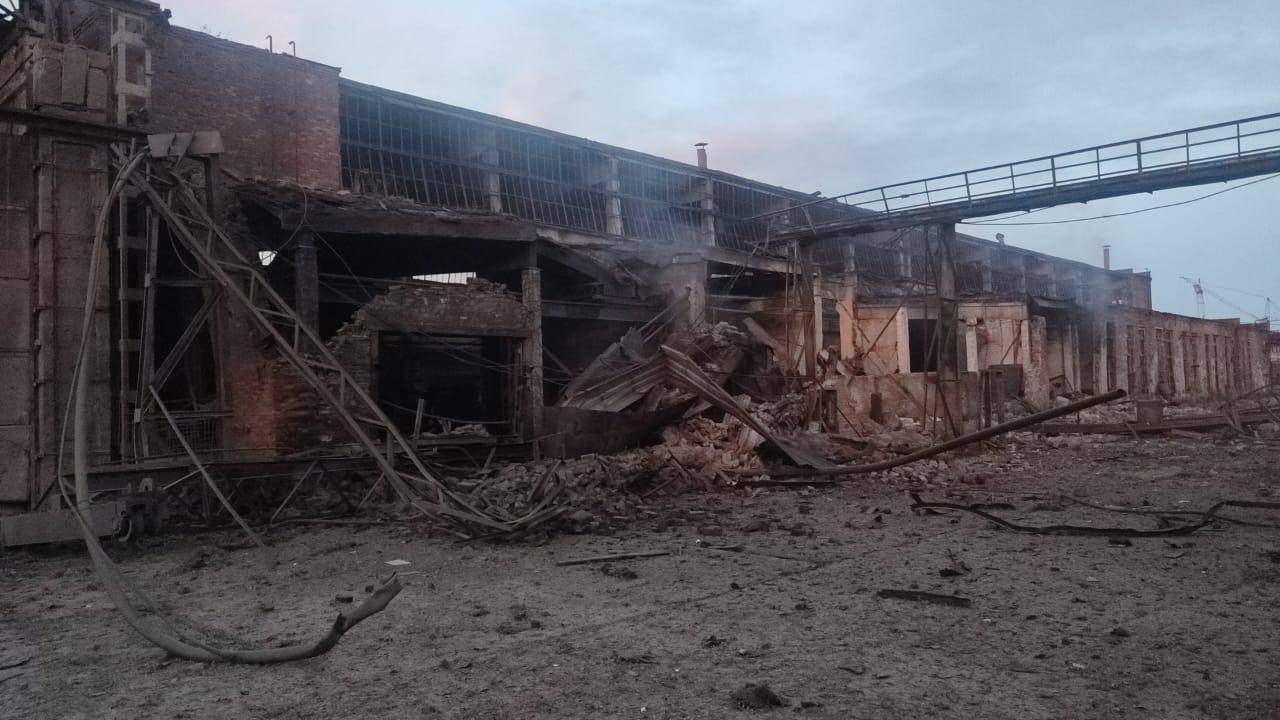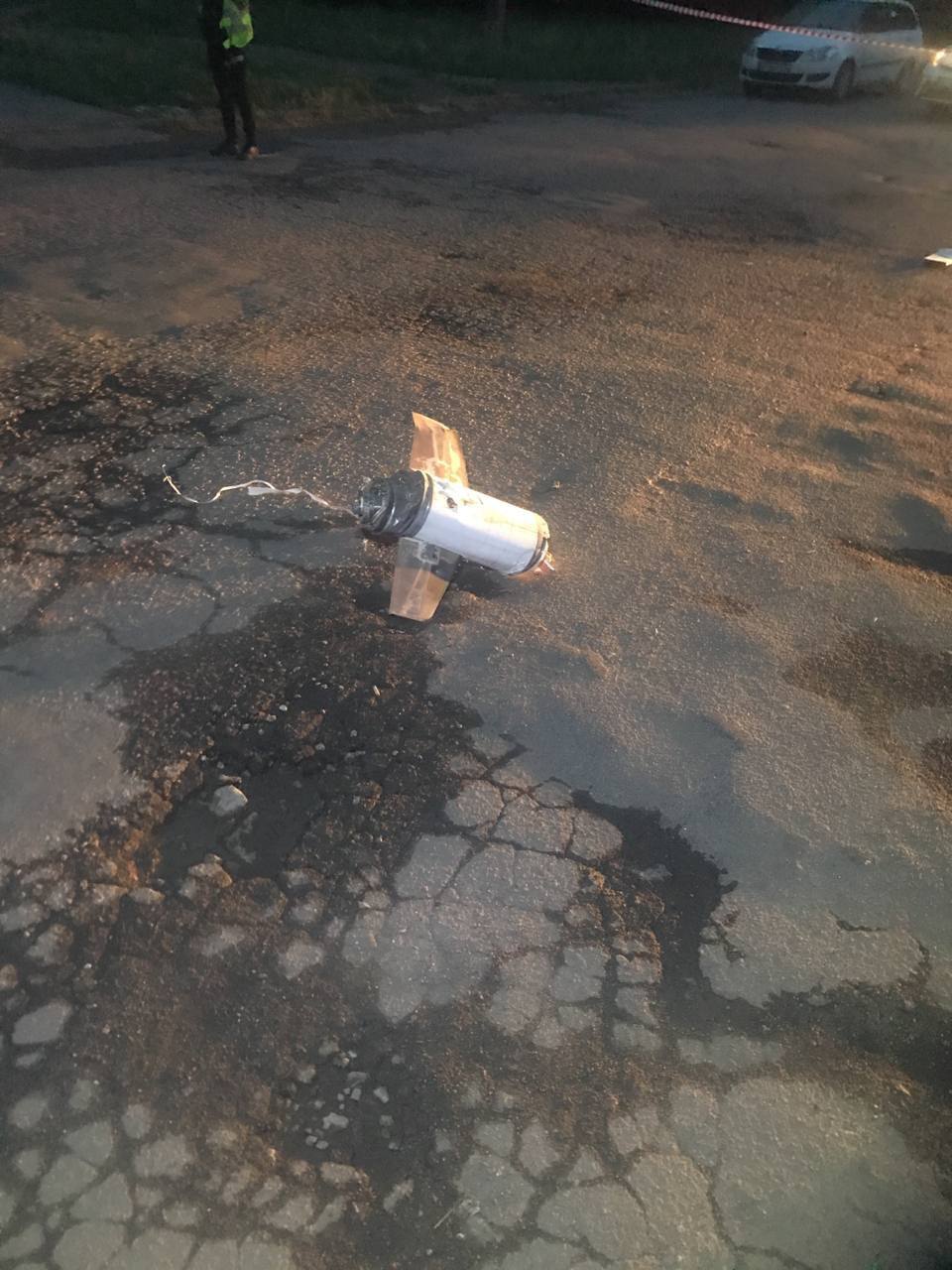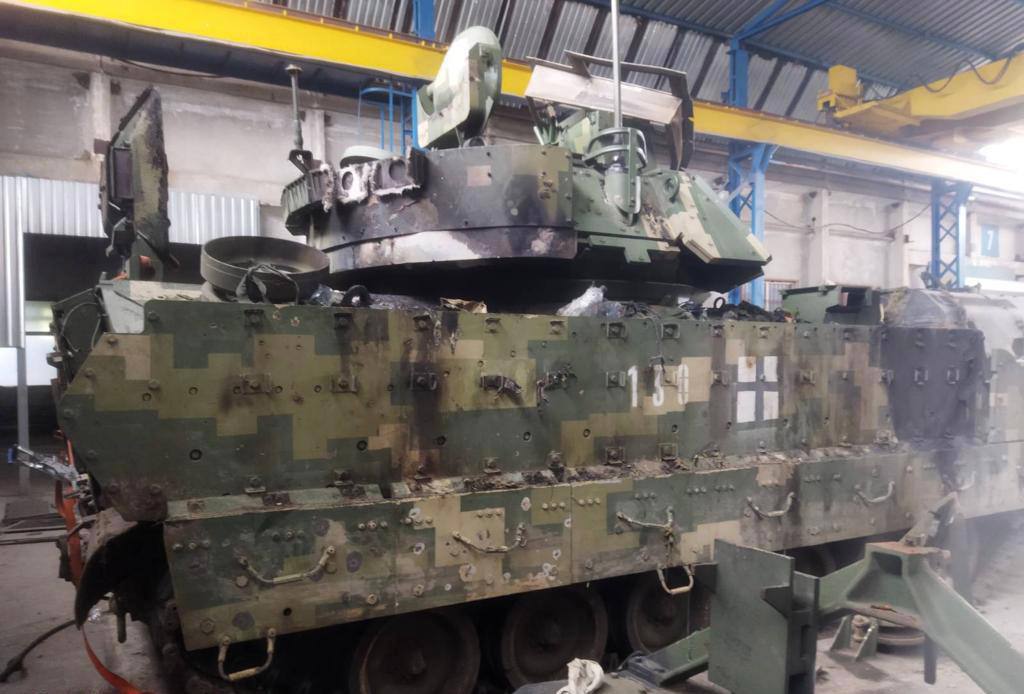In today's summary:
- Ukrainian forces continue attacks in Zaporozhye and Donetsk regions;
- Military experts urge not to draw hasty conclusions about the results of the counteroffensive;
- The fighters of the Akhmat unit arrived in the Belgorod region, but so far they have occupied the defense line behind the conscripts;
- Russia launched rocket attacks on Krivoy Rog and the Kherson region;
- Kamikaze drones of the Shahed family attacked Kharkov and the Odessa region;
- Nine UAVs were intercepted in Crimea: six were shot down by air defense forces, three were suppressed by electronic warfare;
- Baskov and Leps promised a million rubles for each destroyed Leopard tank;
- Norway and Denmark will hand over 9,000 artillery shells to Ukrainian troops.
The situation at the front
According to the representative of the General Staff of the Armed Forces of Ukraine Andrey Kovalev, in the Berdyansk direction , fighting is taking place in the area of \u200b\u200bthe settlement of Makarovka , as well as the villages of Novodanilovka and Novopokrovka, Zaporozhye region . According to him, in the Bakhmut direction , the Armed Forces of Ukraine conducted successful assault operations in the areas of Razdolovka – Krasnopolovka and Berkhovka – Yagodnoe .
"Voenkor" of the All-Russian State Television and Radio Broadcasting Company Oleksandr Sladkov notes that in the Zaporozhye direction , Ukrainians are shelling positions, carrying out remote mining, but are not conducting active offensive operations, although they keep Russian forces in "full readiness", maneuvering reserves.
According to the Russian project WarGonzo, in the area south of Velikaya Novoselka, small arms battles and artillery shelling continue from both sides. Ukrainian forces fired on Russian positions several times with HIMARS multiple launch rocket systems. WarGonzo sources report that on the night of June 15, the Ukrainians tried to disable the surveillance systems of the Russian troops.
Another “military commissar”, Yevgeny Poddubny, reports an attempt by a Ukrainian DRG to land in the area of Hola Prystan and Oleshek in the Kherson region . According to him, the Armed Forces of Ukraine involved four boats and up to 40 personnel, but failed.
In social networks (mainly in Z-channels ), a map with a possible operational plan for the offensive of the Armed Forces of Ukraine in the Zaporozhye direction , compiled by a pro-Russian researcher Matt Davis, who predicts a “catastrophic failure” for Ukraine, because, in his opinion, the Russian army was aware of the plans of the Armed Forces of Ukraine, diverges.

In this regard, it is worth recalling that so far Ukrainian troops have not even approached the main Russian defensive lines. Speaking to The Insider, Israeli military expert David Gendelman points out that it is premature to conclude the success (or failure) of the operation as a whole:
“Breaking through a prepared layered defense is, by definition, a complex operation. Now we are still at the first stage of the Ukrainian offensive. The main part of the forces has not yet entered the battle. As long as there are only local penetrations, there is no breakthrough of defense lines and, accordingly, there is no introduction of a second echelon. The Russians are actively using aviation and artillery, as well as conducting counterattacks.”
Gendelman also draws attention to how Russian troops are performing in terms of command and control:
“The main factor on which the outcome of the operation will depend is the resilience of troops under fire and the stability of combat command and control. It was this that was lost by the Russian troops in the Kharkov direction, as a result of which the Russian group retreated.
At this stage, according to this parameter, the Russians perform much better than then – this is the main reason why the Armed Forces of Ukraine have not yet achieved greater success. What happens next depends on the number and pace of bringing in additional reserves and the accumulation of losses in manpower and equipment on each side.
Retired Australian general and now prominent military analyst Mick Ryan tweeted what to consider when watching the Ukrainian counter-offensive:
- When it comes to military operations, the first reports are almost always wrong, it is too early to judge the success or failure of the counteroffensive;
- It is impossible to judge the course of a war or a single battle from a single photo or video;
- To understand how the conflict develops, watching the war from the side, you need to collect a lot of data from different sources;
- Remember that despite the abundance of information from the battlefield that is available thanks to modern technology, the human will cannot be seen from a distance or through social networks;
- In war there is no certainty of anything, beware of those who predict the end result;
- Stock up on patience for the coming weeks; such operations often develop slowly at first, but later events can occur very quickly.
Dr. Jack Watling from the British Royal United Services Institute (RUSI) comes to similar conclusions. He warns that as the Armed Forces advance, the difficulties with air defense and counter-battery combat will increase, and that the morale of Russian forces could become an unpredictable factor, especially if Ukraine manages to force them into another poorly organized “regrouping”.
Meanwhile, the fighters of the Akhmat unit began guarding the border in the Belgorod region , said the head of Chechnya, Ramzan Kadyrov. In particular, according to him, they took up positions at a checkpoint near the village of Kozinka, Graivoronsky district , which had previously been attacked by Russian armed groups fighting on the side of Ukraine – the Russian Volunteer Corps and the Legion of Freedom of Russia.
The Belgorod edition of "Pepel" writes , with reference to the military, who are familiar with the situation on the border, that the Akhmat fighters occupied "at best, the third or fifth echelons of defense." And in the first and second echelons, closer to the border, there are conscripts.
Mutual shelling and sabotage
According to the Air Force Command of the Armed Forces of Ukraine, on the night of June 15, the Russians fired cruise missiles at Ukrainian territory, and once again used drones of the Shahed family (aka Geran). One missile was destroyed by air defense forces, three more hit industrial facilities in the Dnipropetrovsk region . All 20 drones were also destroyed.
The head of the Dnepropetrovsk OVA, Serhiy Lisak, specified that the missile strikes hit two industrial enterprises in Kryvyi Rih , and fires started there. One person was injured. Damaged buildings, gas pipelines, vehicles. The Russian Ministry of Defense, in turn, reported on the strike on the workshops for the production of unmanned aerial vehicles.


Lisak also reported that another victim died in the hospital on June 13, when a Russian rocket hit a residential building in Krivoy Rog . The total number of victims reached 13 people.
As a result of a strike on the village of Zelenovka in the Kherson region , an elderly woman was killed, another was injured. This was announced by the head of the local OVA Alexander Prokudin. On the evening of June 15, he also wrote about the shelling of the Berislav region , as a result of which a man was killed and an 86-year-old woman was wounded.
According to Oleg Sinegubov, head of the Kharkiv OVA, two Shahed drones attacked Kharkiv at night, both were shot down.
As Sergey Bratchuk, the chairman of the public council at the Odessa OVA, wrote , 13 "Shaheds" attacked the Odessa region , all were shot down by air defense forces.
The “head” of Crimea , Sergey Aksyonov, said that on the night and morning of June 15, nine UAVs were found over the peninsula: six of them were shot down, the rest were drowned out and landed by means of electronic warfare. One of the drones exploded in the village of Dokuchaevo, Krasnogvardeisky District , breaking windows in several houses.
A Ukrainian drone was shot down in Belarus – in the Loevsky district of the Gomel region at the end of May. A message about this appeared on June 15 in the Telegram channel of the Border Committee of Belarus. The UAV was allegedly carrying an explosive device.
Losses
Russian singers Nikolai Baskov and Grigory Leps promised that they would pay one million rubles for each Leopard tank destroyed in Ukraine. They made such a statement at a private event at the SPIEF-2023. Vladimir Kiselyov, the owner of the Russian Media Group, is called the author of the initiative; singer Elena Sever, TV presenter Yulia Baranovskaya and singer Yuri Antonov are also ready to join it.
The well-known Russian military expert Ilya Kramnik notes that in the current conditions “to establish awards “for a leopard” is simply stupid”, and it is necessary to reward for any destroyed tank. According to Kramnik, the Ukrainian battalion on the T-64, T-72 or T-80 is now much more dangerous for the Russians:
Because it is combat-ready, the enemy has been fighting on it for the last year, and not at the training grounds in Grafenwöhr and Sventoszów <training sites for the Ukrainian military in Germany and Poland – The Insider> rode, because they can repair the T-72 from almost any condition, replenishing it faster losses, and finally because they are used to this car.
A Ukrainian video of an abandoned German Leopard 2A4 tank appeared somewhere in the Zaporozhye direction. As the channel “ Tanks . History and Modernity”, the original source states that the tank was blown up by a mine, and the logs next to the tank indicate that they tried to pull it out.
Deputy Minister of Defense of Ukraine Anna Malyar published a photo of the Bradley BMP after a direct hit on it from the Grad. The deputy minister reports with reference to the fighters of the 47th mechanized brigade of the Armed Forces of Ukraine that the crew of the car was successfully evacuated, only one person received a slight concussion, and the driver managed to take the car to a safe distance and put out the fire. The BMP has been sent for repairs. The Deputy Minister stressed that this example shows how strong modern military equipment is. “Bradley helps to save the most valuable thing – the life of military personnel. And steel can always be restored,” says Malyar.

As for the total losses of Western armored vehicles during the counteroffensive, according to the Ukraine Battle Map project, by June 15, Ukraine lost three Leopard 2A6 tanks, one Leopard 2A4, two AMX-10RC armored vehicles and 16 Bradley infantry fighting vehicles (15 of these vehicles have already been sent to replace the lost ). In total, taking into account the promised replenishment, Ukraine still has about 98% of modern tanks and infantry fighting vehicles supplied by NATO countries for the counteroffensive.
According to the sources of the 7×7 portal, Sergei Postovalov, a high-ranking policeman from Voronezh, deputy head of the department of the Ministry of Internal Affairs of the Russian Federation for the Kherson region, died when Storm Shadow missiles hit the Arabat Spit on June 10.
Armaments and military equipment
Norway and Denmark agreed to jointly transfer 9,000 shells to the Armed Forces of Ukraine. As follows from the statement of the Norwegian Ministry of Defense, Norway will provide the shells themselves, and Denmark – fuses and propellants. In addition, the Norwegians will send Ukraine 7,000 shells from their own stocks.
It is noted that all these shells can be used by several types of weapons, including M109 howitzers, which Norway supplied to the Armed Forces of Ukraine earlier.
The Norwegian OSINT analyst The Lookout notes that in total Norway has already transferred 27 thousand shells "solely" and 17 thousand – together with Denmark – by the standards of the Russian-Ukrainian war, this is not much, but still quite significant for these small countries.
Japan is negotiating with the United States over the supply of artillery shells to support the Ukrainian offensive. According to The Wall Street Journal, we are talking about the supply of 155-mm ammunition under the 2016 US-Japanese arms exchange agreement.
The UK Department of Defense has published an accompanying video to information about the procurement of the International Fund for Ukraine. The footage shows British Malloy T150 quadrocopters, adapted to carry cargo and drop weapons; the Dutch reconnaissance UAV of vertical takeoff and landing DeltaQuad Pro VIEW, the Danish reconnaissance UAV Astero ISR, as well as several unidentified drones.
NATO Secretary General Jens Stoltenberg during a press conference on June 15 announced that the process of training Ukrainian pilots on F-16 fighters has begun. He noted the efforts of Denmark and the Netherlands in reaching the relevant agreements. On June 12, the Dutch defense minister told Reuters that training for Ukrainian pilots could begin as early as this summer.
The French company Thales, after more than a decade, is resuming the production of Starstreak man-portable air defense systems. Production will take place at a plant in Northern Ireland, which currently produces NLAW grenade launchers, which performed well against Russian armor at the start of a full-scale war. At the same time, it is noted that the resumption of the release of Starstreak may take more than a year due to the complexity of production and supply chains. In a recent report by the Ukrainian edition of BIHUS Info, a military air defense soldier of the Armed Forces of Ukraine describes how the Starstreak operator saved his anti-aircraft installation at the last moment from being hit by the Russian Lancet kamikaze drone, and asks to send more such systems.
About the main events of the war on June 14 – in the previous report: “The Armed Forces of Ukraine hit five Msta-S howitzers at once, a missile attack on Krivoy Rog, the “loss” of Adam Delimkhanov. What is happening on the front line.


